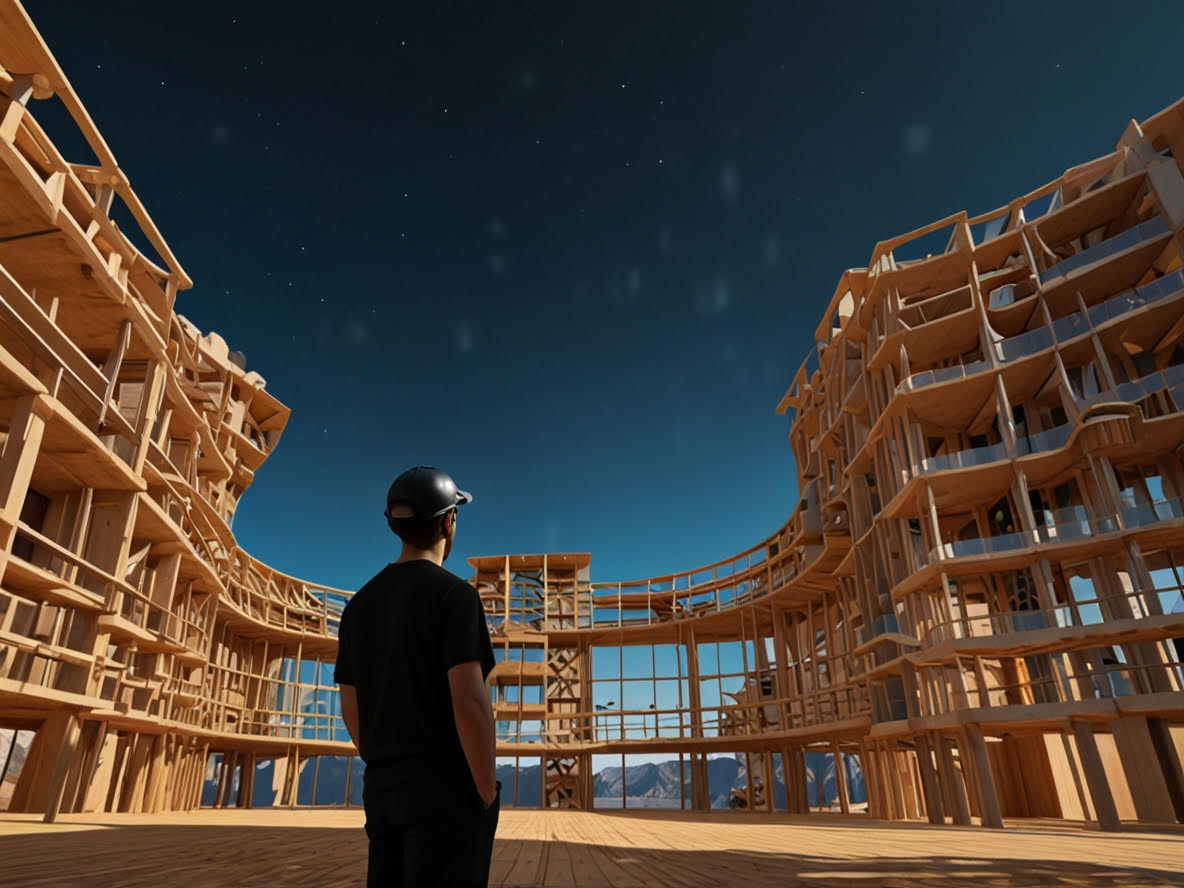- Introduction
- Advantages of Using the Metaverse in Architecture
- Access to Extensive Educational Resources
- Successful Case Studies of Architecture in the Metaverse
- Advertising and Collaboration with Brands
- Conclusion
Introduction
In recent decades, the rapid growth and evolution of new technologies have brought significant attention to the virtual world, or metaverse, from users, industries, and businesses. The architecture field also benefits from extensive capabilities, from designing and simulating interior and exterior spaces to hosting virtual meetings and interactive exhibitions. Architects and designers can use this technology to improve design processes, present and display designs internationally, collaborate globally, and access new resources. In this space, architects can create and visualize spaces that previously existed only in their minds or imaginations. These interactive 3D virtual environments allow architects to transcend physical world limitations and realize ideas that are otherwise unfeasible in reality, offering a novel experience in design and construction.
Advantages of Using the Metaverse in Architecture
Utilizing the metaverse can significantly impact the construction and design processes of various environments such as urban spaces, buildings, and properties, creating a beautiful and efficient 3D space.
- 3D Simulation and Design
The metaverse provides an excellent environment for architects to design and simulate various spaces, allowing for a realistic, three-dimensional experience of spaces before they are constructed. This capability facilitates free movement and detailed examination in this interactive space, aiding in identifying, observing, reviewing, and resolving design and execution issues, thus significantly reducing costs associated with later modifications during project execution.
- Project Presentation and Display
Architects and designers can present their designs and projects in the metaverse in 3D to investors, clients, and students. This modern approach greatly assists both in design and final decision-making, offering viewers a near-real and unique experience. The metaverse enables architects to conduct virtual presentation sessions in interactive offices and showcase their projects in high-quality 3D via conferences or videos. This feature eliminates geographical distance constraints, saving energy and time, allowing projects to be viewed and reviewed without physical presence.

- Collaboration and Communication
Another advantage of the metaverse is the ability for simultaneous and remote collaboration among architects, engineers, and other project-related individuals. Architectural teams, engineers, and managers can collaborate with colleagues and clients globally in interactive spaces, display their projects worldwide, review designs, and engage in consultation and brainstorming. This greatly enhances project efficiency and quality while significantly reducing costs since people can benefit from these capabilities without needing to travel geographically.
- Education
The metaverse can be used as an educational and research tool in architecture. Architecture students can use this space to learn and gain practical experience in designing and constructing spaces. They can also attend international seminars and workshops held in the metaverse to enhance their knowledge and update their skills in this field.
- Revenue Generation and Virtual Tours
With metaverse technology, architects can digitally reconstruct historical, cultural, and artistic buildings to enhance knowledge, preserve cultural heritage, and raise public awareness. These spaces can be used as virtual tours for revenue generation and international display. These tours allow users to visit projects interactively and remotely, providing a more realistic experience with VR devices. Additionally, architects can sell their 3D designs in digital markets for extra income or work as consultants with technology companies and metaverse game developers.
- Cost Reduction
Displaying projects virtually in the metaverse can reduce time and costs associated with physical visits and business trips.

Successful Case Studies of Architecture in the Metaverse
Case studies of architects who have succeeded in the metaverse demonstrate the ability to use new technologies and creativity in designing digital spaces. Notable architects and their successful metaverse projects include:
- Zaha Hadid Architects in Decentraland, renowned for pioneering and innovative designs.
- Bjarke Ingels Group (BIG), known for innovative and sustainable designs, active on Spatial.io.
- Aabegineh Art & Architecture (Mohammadreza Khezadi’s office), active on Spatial.io.
- Plompmozes, a Dutch design studio known for combining digital art and architecture, active on Cryptovoxels.
- MAD Architects, a Chinese firm known for futuristic and beautiful designs, recently engaged in metaverse projects.
- Morphosis Architects, a leading American architecture firm active on Roblox.

Access to Extensive Educational Resources
The metaverse allows architects and enthusiasts to access virtual courses and workshops worldwide. These courses, offered by universities, educational institutions, and reputable architecture firms, cover topics from basic design to advanced techniques. Participation is possible from anywhere, enabling architects to acquire the latest knowledge and skills and familiarize themselves with new methods and information.
Advertising and Collaboration with Brands
In the interactive metaverse, architects, students, consultants, and investors can collaborate with brands globally and design virtual spaces for advertising and marketing their preferred brands. These collaborations can include creating branded spaces, hosting events, and running advertising campaigns in the metaverse, providing more opportunities to interact with architects worldwide, increasing company revenues, and offering better job opportunities to secure projects and showcase architectural work in the new space.
Conclusion
Overall, leveraging the metaverse in architecture can improve project quality and efficiency, enhance productivity for engineers and students, and provide new and engaging experiences for users. This cutting-edge technology can significantly contribute to the transformation and advancement of the architecture industry. Additionally, using this technology can improve design processes and reduce the consumption of natural resources in architectural projects. Metaverse simulations can also minimize the need for physical travel and reduce the environmental impact of transportation.
Table of Contents
Toggle


One Response